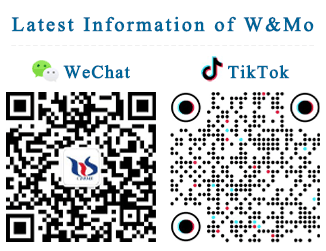Researchers Developed 4.5μm MoS2 Upconversion Nanocomposite
- Details
- Category: Tungsten's News
- Published on Monday, 26 October 2020 12:07
Researchers have addressed the limitation of the collection of photogenerated carriers by using a composite of molybdenum disulfide (MoS2) and a multi-photon absorbing lanthanide-doped upconversion nanoparticles, that emits in the visible, to make a photodetector device with ultrahigh broadband responsivity.
Light can not only be used for lighting, but also used in daily life such as remote controls, automatic doors, and even medical light therapy. However, how to make different wavelengths of light can be sensed and applied to maximize value is the greatest concern of materials scientists. Yangming University issued a press release on Oct 16. The Institute of Biomedical Optoelectronics of the school has developed a new nanomaterial that can convert light waves of different spectrums such as ultraviolet, visible, and infrared into electric current, creating a prototype of a new generation of light sensors.

Single flake MoS2 electrostatically conjugated with UCNPs were used to fabricate the PD device with platinum, and gold contacts. The device was irradiated with UV-to-NIR illumination, at different power density, to study its broadband photosensitivity.
Under vacuum conditions, even higher values of these device parameters were obtained while losing on the response speeds. The photoresponsivity in the nanocomposite followed the trend of the convoluted optical absorption of the individual components. The real application of the PD device was demonstrated using non-laser domestic appliances such as sodium vapor lamp, mobile phone flashlight, and air-condition remote controller.
According to Yangming University, a light sensor is a device that converts light waves into electric current. The most common application is infrared light emitted by remote control to remotely control home appliances. According to different wavelengths, light can be divided into short-wave ultraviolet light, 400nm to 800nm visible light, and longer wavelength infrared light. A good light sensor must be able to absorb light signals of different wavelengths and efficiently convert the light signals into electric current, which is the so-called "photoresponsivity".
Yangming University explained that the materials required for light sensing are unique. Some materials only respond to specific wavelengths of light, while high-energy ultraviolet and visible light are relatively easily absorbed. Therefore, there are still many challenges in the infrared part that need to be broken. Surojit Chattopadhyay, an Indian professor at the Institute of Medical Optoelectronics, Yangming University, and his doctoral student Sandip Ghosh, used MoS2 in combination with upconversion nanoparticles to create a size Only 4.5micron light sensor, the light absorption range covers wavelengths from ultraviolet to infrared, which greatly improves the shortcomings of inefficient infrared conversion current in the past.
Light sensors are used in electronics, medical, optoelectronics and other fields. This achievement not only accelerates the speed of research and development in this field, but also can be used commercially to improve smart phones, remote controls, and even night vision equipment.
The MoS2 upconversion light sensor of only 4.5 microns could easily convert current with various light waves. The device resulted in the highest photoresponsivity, normalized gain, and detectivity, till date, in this class of device. This research was completed by Yangming University, Taiwan University of Science and Technology, and National Laboratory Research Institute was published in Nano Energy, a key journal of nanomaterials science.
| Molybdenum Supplier: Chinatungsten Online www.molybdenum.com.cn | Tel.: 86 592 5129696; Fax: 86 592 5129797;Email:sales@chinatungsten.com |
| Tungsten News & Prices, 3G Version: http://3g.chinatungsten.com | Molybdenum News & Molybdenum Price: http://news.molybdenum.com.cn |



 sales@chinatungsten.com
sales@chinatungsten.com